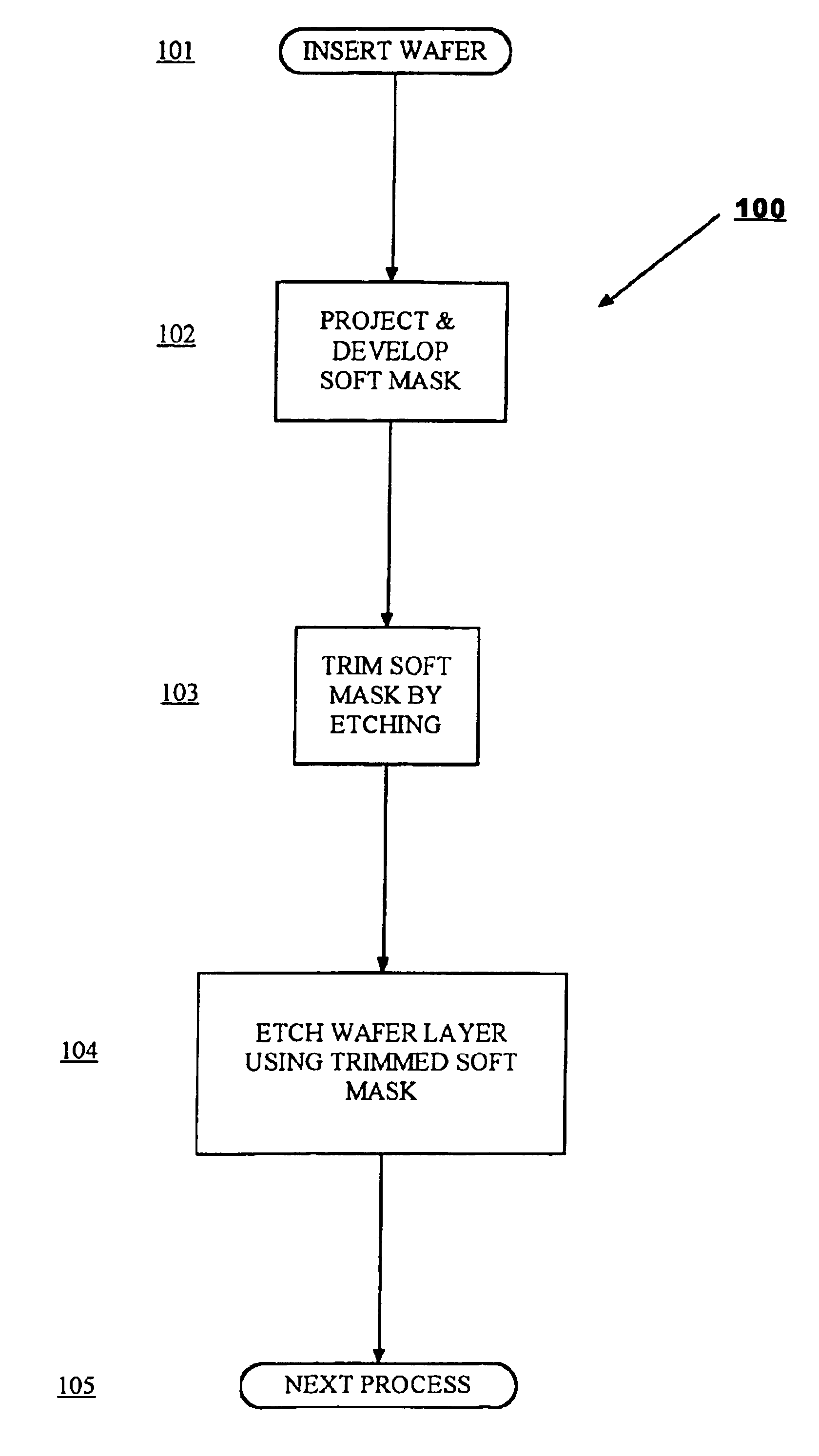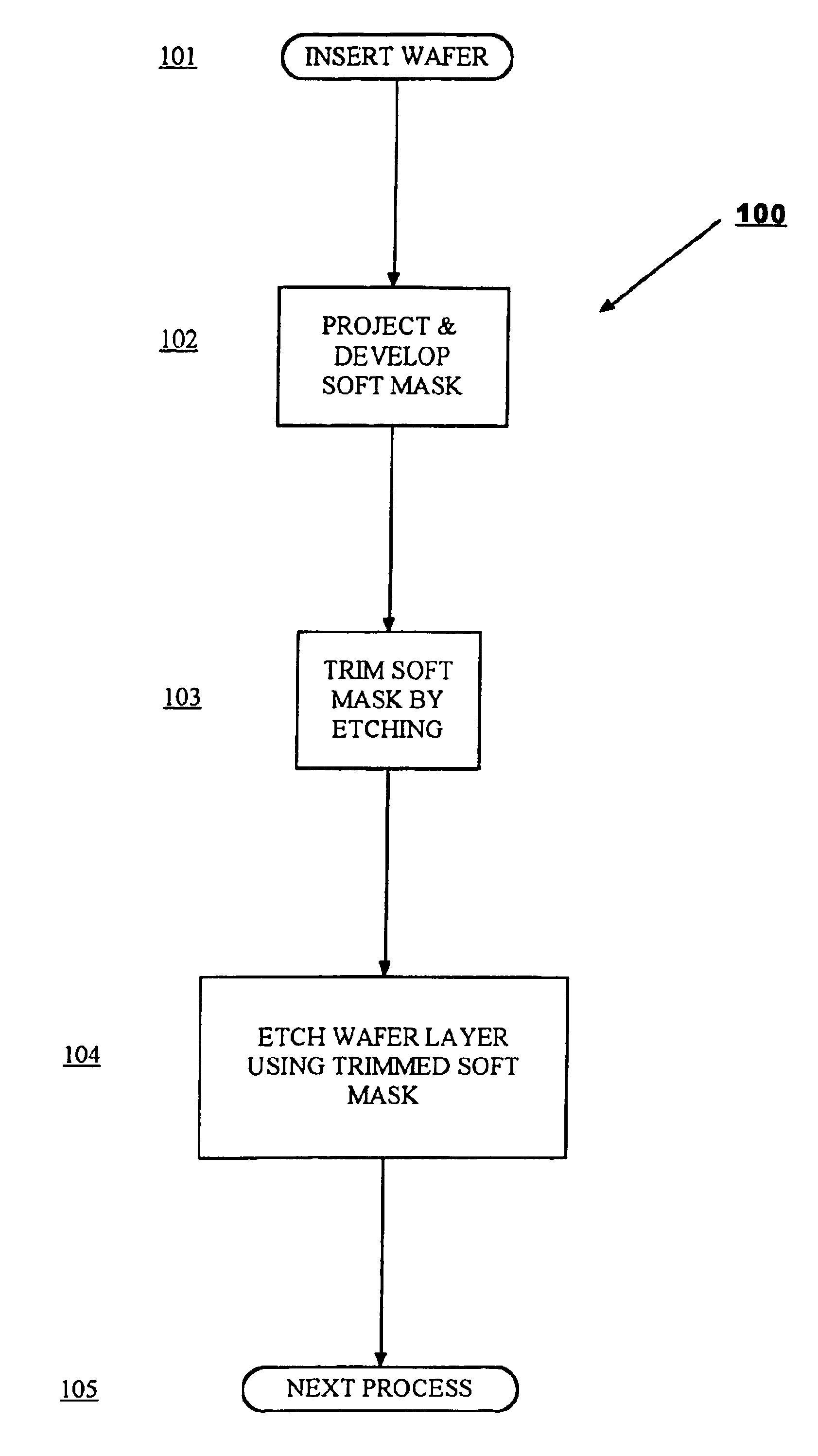Gate linewidth tailoring and critical dimension control for sub-100 nm devices using plasma etching
a technology of plasma etching and line width, which is applied in the direction of photosensitive material processing, photomechanical equipment, instruments, etc., can solve the problem that the process of simply developing a lithographic image projected onto the wafer no longer provides the critical dimension required
- Summary
- Abstract
- Description
- Claims
- Application Information
AI Technical Summary
Benefits of technology
Problems solved by technology
Method used
Image
Examples
Embodiment Construction
Referring now to the drawing, a basic technique is discussed in which a first mask, referred to as a soft mask, is developed on a wafer and then trimmed using a precisely tuned etching process to etch the developed masking material. The resultant trimmed mask is then used as a mask to etch a layer on the wafer, again using a precisely tuned etching process different from the previous etch by reason of having now to etch a material on the wafer rather than the mask material.
Not only is the dual etching process novel but the disclosure additionally provides a range of conditions that optimize each of the two etching steps. The inventors have developed and investigated this technique in a standard capacitively coupled plasma reactor. However, the basic technique can easily be expanded into other etching techniques, conditions, and combinations than the precise conditions described herein.
Referring now to the FIGURE, a wafer is introduced (step 101) into the environment appropriate to p...
PUM
| Property | Measurement | Unit |
|---|---|---|
| width | aaaaa | aaaaa |
| RF power | aaaaa | aaaaa |
| pressure | aaaaa | aaaaa |
Abstract
Description
Claims
Application Information
 Login to View More
Login to View More - R&D
- Intellectual Property
- Life Sciences
- Materials
- Tech Scout
- Unparalleled Data Quality
- Higher Quality Content
- 60% Fewer Hallucinations
Browse by: Latest US Patents, China's latest patents, Technical Efficacy Thesaurus, Application Domain, Technology Topic, Popular Technical Reports.
© 2025 PatSnap. All rights reserved.Legal|Privacy policy|Modern Slavery Act Transparency Statement|Sitemap|About US| Contact US: help@patsnap.com


